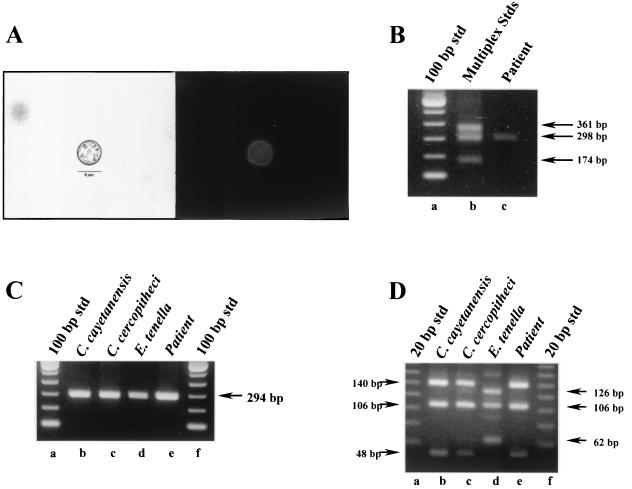FIG. 3.
Analysis of a human fecal specimen by multiplex PCR amplification by using SNP primers to diagnose a C. cayetanensis infection. Raw fecal material (10 μl) was spotted onto an FTA filter and prepared for PCR. A primary amplicon was generated with the F1E-R2B primer pair by conventional PCR and then used in subsequent nested amplifications. (A) Microscopic identification (1000x) of C. cayetanensis by using Differential interference contrast (left panel) and UV autofluorescence (right panel) images. Magnification, ×800. (B) Multiplex PCR amplification with SNP primers. Lane a, 100-bp DNA ladder; lane b, SNP multiplex PCR amplicon standards from C. cercopitheci (360 bp), C. cayetanensis (300 bp), and E. tenella (173 bp); lane c, patient specimen. (C) Conventional nested-PCR amplification. Lanes a and f, 100-bp DNA ladder; lane b, C. cayetanensis; lane c, C. cercopitheci; lane d, E. tenella; lane e, patient specimen. (D) RFLP analysis of nested-PCR amplicons. Nested amplicons obtained in panel B were digested with MnlI. Lanes a and f, 20-bp DNA ladders; lane b, C. cayetanensis; lane c, C. cercopitheci; lane d, E. tenella; lane e, patient specimen.

